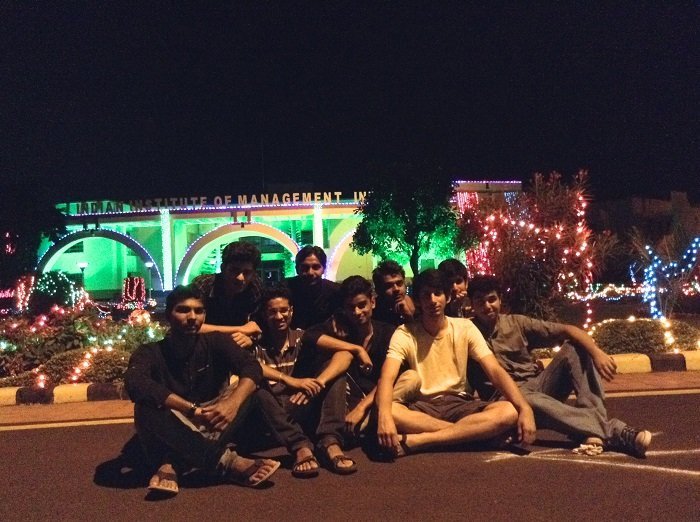Millennials have captured the world’s imagination. Often called Gen Y, researchers identify millennials as those born between early 1980s and early 2000s although there is no clear definition yet. Millennials have confounded recruiters, marketers and even politicians. This article looks at some of the lifestyle preferences of Generation Y and how it is forcing marketers to reposition their brands and adopt different strategies.
Millennials- Power in Numbers
Millennials account for over 600 million in India and over 76 million in USA which are significantly higher than all other segments in these countries.This generation has grown up in a much more liberalised world than the previous generations. The shackles of a license raj dominated socialist industrial environment decimated, Gen Y in India has been much more exposed to a variety of products, television marketing, technology and consumerism. The tag of ‘Selfie generation’ seems apt with the amount of time an average upper middle class millennial spends on smartphones and social networks. The habits of earlier millennials were characterised by the advent of digital technology, mobile telephony, cable television and a larger choice in consumer goods. However the millennials born later grew up in an environment where internet is seen as a basic necessity (as important as electricity and good roads) and are increasingly using social media to engage with each other and the world.
Indian millennials have experienced the economic upswings of early 2000s to 2008 as well as the downturn in the market. While this generation has been living in a much more connected world, they are in a much more unpredictable world. Having witnessed world altering events such as 9/11 terrorist attacks, 26/11 attacks, Gulf wars, Fukushima crisis and Global Recession, the millennials are much more understanding of the political and social challenges facing the world. According to a survey by Nielsen, millennials in India are actively saving for their health, for their children, backup in case of loss of job and to start their own business. Even high income groups are actively saving and investing to secure their financial future. A similar trend can be observed in USA, Brazil and China although the reasons range from higher education and home loans/mortgages to personal luxury and unforeseen emergencies.

One of the most important characteristics observed in millennials is their need for space or freedom, something which has confused a lot of social commentators and members of the previous generation. The current generation of youngsters especially in urban India have grown up under tremendous amount of exposure to the world and consequent pressure. A highly competitive environment and expectations has created a desire to express more. The advent of social media has given them an outlet for their emotions.
The 2014 General Elections was a perfect example of how important the new generation is. Comprising nearly 50 % of the population and having high expectations, Generation Y turned up in large numbers to express their opinion with votes. Voting was not only seen as a fundamental duty but also as something trendy, with people clicking their Voter Ink Selfies and tweeting their way to poll booths.
Marketing Strategies Adopted by Marketers
Success of brands in the long term lies in innovation and strategy. Companies need to re-invent their products or promotional campaigns to stay relevant in a dynamic market. Coca- Cola is one of the biggest examples of an old brand staying relevant. Without the luxury of completely changing their product, Coca Cola has focused on packaging innovation. Coca-Cola has completely changed its website from just being an information storehouse to an interactive layout. A digital magazine style, twitter trends and Facebook ads have helped the brand stay relevant in spite of declining sales in USA. Their 2014 Superbowl advertisement in USA showing a multi lingual and multi ethnic rendition of America is Beautiful showed the evolution of Coca Cola and USA as a country. This is a very good example of a brand adjusting its campaigns in accordance with the changing times.
One of the best examples of marketing innovation has been Red Bull. It has recognised the new generations’ desire for life experiences. It has focused its energies on adventure sports, daredevilry ( Felix Baumgartner’s record breaking free fall and subsequent tweet , “One small step for man, one giant step for energy drink marketing”) and not spent much on traditional marketing avenues like TV, print and radio. Individually branded events like Red Bull Road Rage, Air Race World Championships etc. and its association with Formula 1 has helped it create the desired image in the minds of consumers.
Another brand which has been quite innovative when it comes to marketing to the Generation Y is Airtel. Their ad campaigns focused on youngsters and the importance of friends and music in their life while subtly promoting Airtel Music and their 3G connections.
Generation Y has been called the ‘Selfie Generation’ and not without reason. While selfies were a fad amongst youngsters, the Ellen DeGeneres Oscar selfie converted it into a rage. A lot of brands chose to cash in on this opportunity notably Dove and Dunkin Donuts. Not every brand got it right. Dove’s #beautyis campaign was criticised as having no purpose other than selling Dove products. Female critics were vocal about the campaign being focused on selling beauty rather than appreciating beauty.
A lot of brands tried to focus their campaigns on selfies during the FIFA World Cup and IPL. Campaigns of Carlsberg and Vodafone were pretty well received.
In this day when information is available within seconds, it is important that brands do not preach to youngsters. Customers have become much wiser and informative and generally go through multiple sources of information before buying a product. Rather than a sales pitch, it will better if marketers engage their target audience. Highly customised targeted campaigns will probably be much more effective rather than generic campaigns.
What more marketers cando
The current generation is shifting from a single screen to multiple screens. Televisions are no longer the major source of information. Smartphones, laptops, tablets and e-readers have taken its place. Apps and social networks have become the new sources of news and information. Brands aiming to make a strong foundation among Generation Y must shift their energy on internet rather than television and newspapers. Youngsters are spending more time watching on demand videos rather than television. Quite a number of brands have started taking Youtube seriously, however their ads are similar to those on TV and most users opt to skip it rather than watch it. Companies should bring in more compactness in their advertisements to cater to the Youtube watching public. Shorter limited videos like tweets will be much more effective. Companies can use apps like Vine and Instagram in much better ways to send across their message.
Millennials are much more likely to stand up for a cause than their previous generation. Brands can capitalise on this by linking their social programmes with their marketing campaigns to convince people that they are doing ‘good’ by buying their product.
In the age of business analytics and big data and people spending more and more time online, brands have a plethora of information to work with. This information can enable marketers to place their brands better on websites, Facebook and other avenues. Companies can go beyond Facebook Likes and Retweets and actually translate these into sales. Social media can be used to engage the customer and make him/ her a part of the product. Hosting contests, creating questionnaires for suggestions on product improvement, celebrating milestones can go a long way in customer engagement and helping in creating brand loyalty.
Among the millennials, a large majority of them are students. For brands which do not have huge advertising budgets, associating themselves with college campuses during their annual fests can work wonders. Another way which has huge potential is gamification. Having a rewards point system or token is the most basic way, but new age marketers can go much beyond that. With smartphone penetration increasing and people getting addicted to games such as Candy Crush and Temple Run, brands can create simple games, puzzles to keep the customers engaged. Green Giant, a brand of frozen and fresh vegetable in USA teamed up with Farmville, a popular Facebook game to promote its products online. Players could use the points won in the game and redeem them on coupons for offline purchases.
Companies must also always keep an eye on online reviews. Customers are more likely to buy products with proper research and consultations with friends. Thus the traditional word of mouth marketing has assumed an online avatar. Online food review sites such as Zomato and Yelp have influenced the eating behaviour of people and forced restaurateurs to overhaul their online presence, media and marketing strategies. A similar impact in the tourism industry has been created by TripAdvisor. Although these have attracted criticism, the fact is that brands can’t afford to have negative reviews.
The crux of marketing remains the same while marketing to millennials. Only the means have changed. Customers want to feel more involved and connected with their products and brands.

They have many more options and will not hesitate to voice their criticism on Twitter or Facebook, should they be disappointed by a service/product. The key to success for brands will be giving the right information to their audience using the right technology and with the right media.
Tags: branding millenials viral marketing Word-of -mouth marketingYou might like reading:

Fun Time @ IIM-Indore
What kind of a life do you expect at a B-school? Lectures, mess, faculty, assignments and business projects? Well, considering all that has happened in our college, I can say that there is much more into it than we think. As I passed out of my school as a science student, I was very much excited regarding what new things […]

Risk Free Rate- Logic behind Assumptions
The cost of Equity is given as Ke = Rf + Beta* ( Rm-Rf) Where Rf = Risk free rate Rm= Expected return from the market Here, Risk Free rate is rate at which there lies no variance around the expected return rate. It means that on a risk free asset, the actual return is equal to the expected […]






























